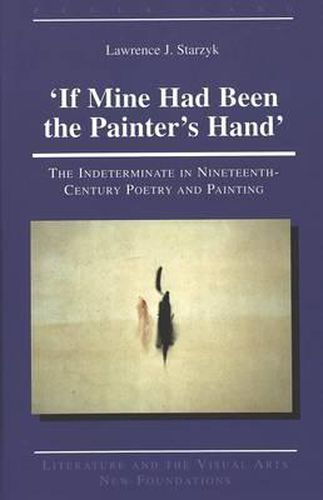Readings Newsletter
Become a Readings Member to make your shopping experience even easier.
Sign in or sign up for free!
You’re not far away from qualifying for FREE standard shipping within Australia
You’ve qualified for FREE standard shipping within Australia
The cart is loading…






This study examines the role of indeterminacy - what Chesterton called the final skepticism which can find no floor to the universe - in nineteenth-century British art. Beginning in 1806 with Wordsworth’s questioning of the essential ground and companionableness of things and concluding with Hardy’s dramatization in Wessex Poems of the treacherous relationship between the word and the image, ‘If Mine Had Been the Painter’s Hand’ chronicles the growing sense of the antagonism of things as evidenced in the irreconcilable tension between the visual and the verbal. The writers examined here - among them, Tennyson, Browning, Arnold, and Lizzie Siddal - rely in varying degrees and at critical junctures in their artistic careers on the pictorial to forge analogs as evidence of the kindredness of things. Their failure testifies to their sense that all is, as De Quincey observed, irrelate, indeterminate.
$9.00 standard shipping within Australia
FREE standard shipping within Australia for orders over $100.00
Express & International shipping calculated at checkout
This study examines the role of indeterminacy - what Chesterton called the final skepticism which can find no floor to the universe - in nineteenth-century British art. Beginning in 1806 with Wordsworth’s questioning of the essential ground and companionableness of things and concluding with Hardy’s dramatization in Wessex Poems of the treacherous relationship between the word and the image, ‘If Mine Had Been the Painter’s Hand’ chronicles the growing sense of the antagonism of things as evidenced in the irreconcilable tension between the visual and the verbal. The writers examined here - among them, Tennyson, Browning, Arnold, and Lizzie Siddal - rely in varying degrees and at critical junctures in their artistic careers on the pictorial to forge analogs as evidence of the kindredness of things. Their failure testifies to their sense that all is, as De Quincey observed, irrelate, indeterminate.